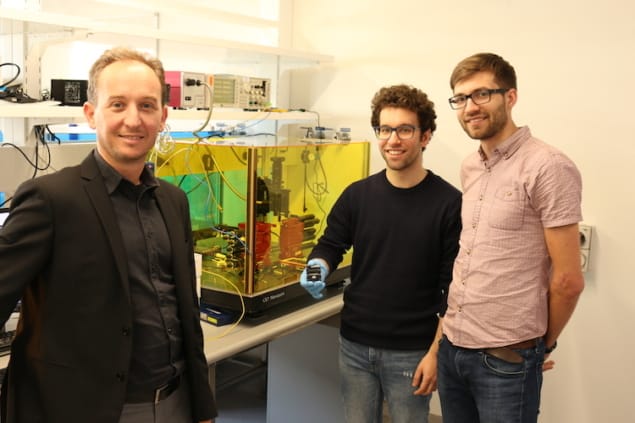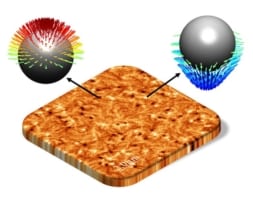
Topological insulators are a recently discovered phase of matter that are electrical insulators in the bulk but which can conduct electricity on their surface via special “topologically protected” surface electronic states. These states have remarkable properties, including the fact that they are robust to defects and noise in the surrounding environment. A team of researchers in Australia, Italy and Switzerland have now shown that topological states made from single photons can be used as quantum bits (qubits) to process quantum information in a reliable way. The work could help in the development of more robust quantum computers.
While classical computers store and process information as “bits” that can have one of two states – “0” or “1” – a quantum computer exploits the ability of quantum particles to be in “superposition” of two or more states at the same time. N such qubits could be combined or “entangled” to represent 2N values at once, which could allow for parallel processing of information on a massive scale. Such a device could, in principle, outperform a classical computer for solving some advanced computational problems, such as factoring large numbers or simulating the interactions between many fundamental particles.
There is a problem though: qubits are very fragile and any surrounding noise can easily degrade the quantum nature of the qubits. This process is called decoherence, and if not checked, will prevent a quantum computer from functioning.
Great promise for quantum computing applications
Researchers first discovered topological phases of matter in experiments ten years ago (in the binary alloy bismuth-antimony). The sturdy surface conduction seen in these materials comes from their topology. In fact, the energy difference between the surface states and the bulk states is so big that an electron moving along the surface cannot scatter into the bulk. Topological insulators thus show great promise for quantum computing applications, where scattering from defects will destroy quantum information carried by electrons.
In their study, researchers led by Albert Peruzzo of the RMIT University in Australia studied topologically protected states made of single photons rather than electrons. They began by localizing these states at the opposite edges of a waveguide array, which they made using a femtosecond laser writing technique in borosilicate glass. This technique allows them to control the waveguide coupling coefficients in the device with high precision.
Replicating the Hong-Ou-Mandel experiment
They then quantum mechanically interfered these photonic topological states in their waveguide chip by replicating the so-called Hong-Ou-Mandel (HOM) experiment, which is normally done in a 50:50 beamsplitter. Such quantum interference is a key phenomenon in quantum physics and is at the heart of optical quantum computing, says Peruzzo. “In our experiment, we relocated the photonic topological states from the opposite edges of our waveguide array towards the centre, where they could interfere. We then relocated them back to the edge so we could collect and measure them.
“Our device is in fact the first ‘topological beamsplitter’ – a completely new component of its kind.”

Topological light makes a quantum connection
The team, which includes scientists from the Politecnico di Milano and ETH Zurich, says it’s observed HOM interference with over 93% visibility. “Demonstrating such high-fidelity quantum interference is a precursor to transmitting accurate data using single photons for quantum communications – a vital component of a global quantum network,” says study lead author Jean-Luc Tambasco at RMIT.
“We expect that our demonstration will open the way to a new area of topologically robust quantum processing and simulations in integrated photonics technology,” Peruzzo tells Physics World.
The research is detailed in Science Advances 10.1126/sciadv.aat3187.



